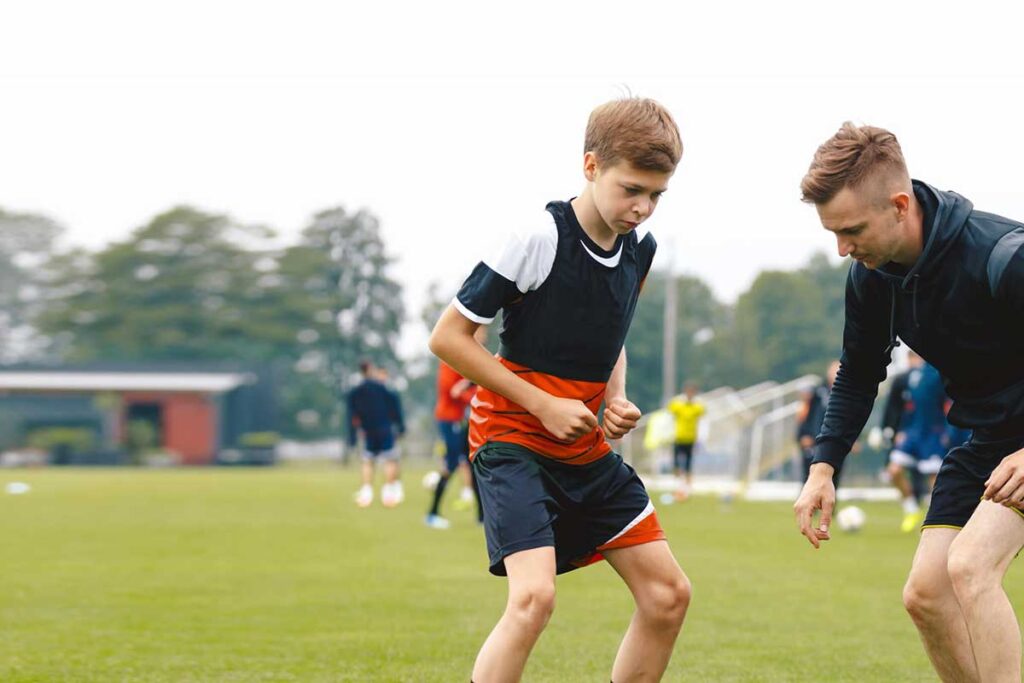Coaches who approach training through military style ‘shout and command’ tactics will quickly find their students demoralised and motivated only by a fear of failure.
Let’s look at this from another perspective.
Imagine sitting in your workplace each day, with your boss shouting at you for the entire day – how long could you last? How long before your motivation wanes and resentment towards your employer builds?
In such an environment, it doesn’t take long before your performance levels drop as your self-esteem hits rock bottom. The same is true of the coach/student relationship.
Remember Who You Are Coaching
The big problem here is that the students in your charge are children, not adults. As adults, we are able to express ourselves, communicate discontent and take action to remedy the situation.
Children, however, are not as adept at communicating their feelings. They arrive at each training session with a desire to learn and trust in your coaching methods. They have no flexibility in the training provided and no ability to defend themselves.
Are You Pulling In Opposite Directions?
This kind of ‘yelling and telling’ environment is a slippery slope. The more demands placed on them, the greater the chances they will not want to perform. At this point, a tug-of-war then develops between unhappy children and an aggravated coach.
Within any high performing culture, morale is an important asset – the rapport between coaches and their students must take precedence over the potential rewards.
Rapport Must Come First
Building rapport is easy. Truly, it is. The first thing to remember is that you should treat others as you would expect to be treated yourself. Be courteous and respectful. They are children first, your student second. This is the secret to long-term morale.
Often coaches become immune to the emotions of their students, developing instead an inferior, sterile form of teaching.
The coach who invests in the emotional well-being of their pupils and takes the time to build a rapport with them will discover they then perform better.
Rapport Building Coaching Tips
Where many coaches come unstuck is in failing to get to know the people they teach. Find out more about them and their life: Do they enjoy school? What did they do last weekend? What are their favourite things?
The most important element in building rapport is trust. Make sure you build it, not break it.
Being approachable and showing empathy will make it easier for your students to share their concerns with you too. Children will not communicate if they feel intimidated or fear consequence.
Show you can cater to the needs of individuals as well as the group and treat everyone equally. When it comes to giving feedback, make it positive and authentic – they need to feel it is genuine.
The Best Coaches…
Are those who have the best understanding of their pupils. As Tony Robbins said: “Most teachers know their subject, but they don’t know their students. ”While it may be easier to build rapport with the parents than the children themselves, shifting your focus to the child is essential if you are to develop a deeper understanding of them.
Why? Because this is the only way you can hope to discover what drives them, what motivates them, their inspirations, and their goals. More than this, you will learn how to read their emotions, feelings, and body language.
The time you spend developing a great coach/student relationship is an investment. One which will save you time, and make your time coaching much more fulfilling.
Article by Nick Ruddock – Resident Coaching Expert and Consultant.
In order to be an outstanding coach, you also need time to plan lessons and reflect on your methods. One way to save time is by cutting your time-consuming admin. Luckily for you, our LoveAdmin software can reduce your admin by 80%.
Get your FREE demo f the software today.
















